|
What is Plastic? What is plastic made of? What is plastic made into? Where does plastic come from? How are plastics made? Can you name a plastic material? What are the properties? What is its density? What is the melting point? How do you calculate its strength? How can you differentiate between plastic, metal, wood, non-plastic polymers, and glass? Is it a good or bad conductor? Is it highly resistant to most alkalis and acids, organic solvents, degreasing agents, and electrolytic attack? Is it resistant to aromatic, aliphatic, chlorinated solvents, microwaves, and UV? Is it composed of non-toxic, non-staining, and easy to produce assembly material? Can additives such as pigments, carbon black, rubbers, antioxidants, and a UV stabilizer improve some properties? In what dimensions is it available? Where is it used? How is it extracted? Is it resistant to bacterial growth? Is it resistant to corrosion? Are there any health hazards? Here are further guidelines. |
Types of Plastics
Polyurethanes Polyesters Epoxy resins Phenolic resins Thermoplastics Polyethylene (PE) Polypropylene (PP) Polyvinyl chloride (PVC). Here are further guidelines. |
| Biopolymers and Recycling |
| Making Plastics |
| Polymers/ Plastics |
|
Here are further guidelines. Polypropylene Polyethylene Polystyrene Polyesters Polycarbonate PVC Nylon Poly(methyl methacrylate) |
|
What is plastic made of?
Essentially, plastics are human-made, synthetic polymers made from long chains of carbon and other elements. Through a process called cracking, crude oil and natural gases are converted to hydrocarbon monomers like ethylene, propylene, styrene, vinyl chloride, ethylene glycol, and so on.[1] These are then mixed with other chemicals to produce a desired finished product - plasticizers like phthalates to make PVC soft, butadiene to make plastic #7 tough, and many others. Additional additives include bacteria, heat, light, color, and friction. To create the desired form and shape of the plastic, the materials is finally cast, spun, molded, fabricated, extruded, or applied as a coating on another material. What is plastic made into? Plastics are everywhere in our lives - our kitchens, our vehicles, our purses, and even inside our own bodies. Check out the many ways plastics can be found all around you: |
|
Where does plastic come from? Plastic is all around us! Often we think of plastics as containers like drink bottles, yogurt cups, or soap dispensers. But many more things are made with plastic, too! Most computers use plastic, furniture pieces like chairs are often made from plastic, and even lots of cars are made with plastic! Because they’re lightweight, easily molded into shapes or dyed into colors, and strong, plastics are a good choice for lots of different needs. They also last a long time and are less likely than many other materials to corrode (weaken) when they come into contact with certain substances. Plastic is a man-made product that doesn’t occur naturally on its own. Almost all plastics are made from oil by a special procedure that changes the oil’s carbon. Carbon is an element, and oil naturally has lots of them. (Even though they’re too small for you to see.) While plastic has many benefits, one frequently cited problem with this useful material is that it’s usually not biodegradable (able to naturally decompose) and so if it’s thrown away instead of recycled, it can create a lot of waste. To help with the problem, lots of recycling programs have become easily available and many scientists and researchers are looking for ways to make plastics more biodegradable. Neat! |
| List of Plastics Material (Updated) |
|
Acrylic For Aircraft  What is Acrylic? What is an acrylic sheet? Have you ever looked at something made of plastic and wondered how it was made? Are you aware that Jet-aircraft cabin windows are made from acrylic sheet?
|
| Acetal (Acetal) |
| Acrylonitrile Butadiene Styrene (ABS) |
| Acrylonitrile Ethylene Styrene (AES) |
| Acrylonitrile Styrene (AS) |
| Acrylonitrile Styrene Acrylate (ASA) |
| Alkyd (Alkyd) |
| Alphamethylstyrene (AMS) |
| Biodegradable Polymers (Biodeg Polymers) |
| Cellulose Acetate (CA) |
| Diallyl Phthalate (DAP) |
| Dicyclopentadiene (DCPD) |
| Epoxy (Epoxy) |
| Expanded Polystyrene (EPS) |
| Fluoropolymer (Fluoropolymer) |
| Furan (Furan) |
| Ionomer (Ionomer) |
| Liquid Crystal Polymer (LCP) |
| Maleic Anhydride Grafted Polymer (MAH-g) |
| Melamine (Melamine) |
| Methyl Cellulose (MC) |
| Methyl Methacrylate (MM) |
| Phenolic (Phenolic) |
| Polyamide (Nylon) |
| Polyarylate (Polyarylate) |
| Polyaryletherketone (PAEK) |
| Polybenzimidazole (PBI) |
| Polybutadiene Rubber (PBR) |
| Polybutylene (PB) |
| Polycaprolactone (PCL) |
| Polycarbonate (PC) |
| Polyester (Polyester) |
| Polyether Imide (PEI) |
|
Polyethylene (PE)Polythene LDPE - Low density polyethylene HDPE - High density polyethylene |
| Polyimide (PI) |
| Polyketone (PK) |
| Polylactic Acid (PLA) |
| Polymethylpentene (PMP) |
| Polyolefin (Polyolefin) |
| Polyparaxylylene (PPX) |
| Polyphenylene Ether (PPE) |
| Polyphenylene Sulfide (PPS) |
| Polypropylene (PP) |
| Polystyrene (PS) |
| Polysulfone (PSU) |
| Polyurethane (PUR) |
| Polyurethane Thermoset Elastomer (TSU) |
| Polyvinyl Chloride (PVC) |
| Proprietary (Proprietary) |
| Silicone (Silicone) |
| Styrene Acrylonitrile (SAN) |
| Styrene Acrylonitrile Silicone (SAS) |
| Styrene Maleic Anhydride (SMA) |
| Styrenic + Vinyl + Acrylonitrile (SVA) |
| Thermoplastic Elastomer (TPE) |
| Thermoplastic Polyurethane (TPU) |
| Thermoplastic, Unspecified (TP, Unspecified) |
| Thermoset (TS) |
| Thermoset Elastomer (TSE) |
| Urea-formaldehyde |
| Vinyl Alcohol (VOH) |
|
Plastic For Tires 
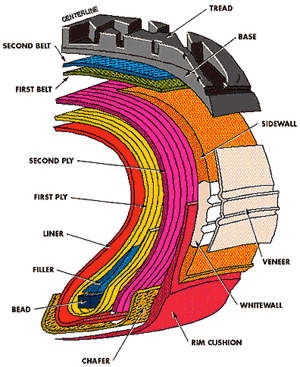 Acrylic For Aircraft  For Clothes Iron 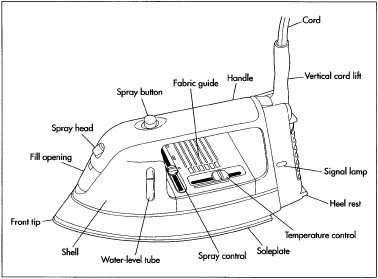
Vacuum Cleaners 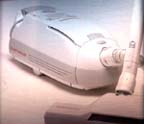 Conduit for Wires, Cables & Cords 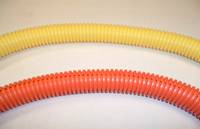 For Rubber Tapes 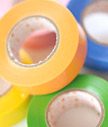 For Bags & Packaging For Barrels & Drums For Bin Racks & Bins For Bottles For Carts & Trucks For DVD Cases For Food Industry For Labware For Nalgene Labware For Outdoor Products For Pipe, Duct & Blowers For Plastic Buckets For Plastic Fittings For Pumps For Rubbermaid For Safety & Tools For Sheet, Rod & Shapes For Signage For Tanks & Accessories For Totes & Containers For Trash Containers For Tubing & Fittings For Tygon Tubing For Valves For Apparel & Accessories For Automotive Accessories For Bags & Liners For Bins & Containers For Building & Construction For Carpet, Fabric & Fiber For Custom Products For Farming & Agriculture For Film & Sheet For Furniture & Accessories (Indoor) For Furniture & Accessories (Outdoor) For Housewares For Industrial, Shipping & Warehouse For Janitorial Supplies For Landscape & Garden Design For Marine For Office Supplies For Packaging For Planting Materials & Accessories For Premium & Promotional Items For Recreational Products & Toys For Road, Highway & Parking |
|
Q) Why do we need different kinds of plastics?
Q) How do I learn more about plastics use in automotive? Q) Why Choose Plastics over Metals? Q) Why Choose Acrylic Sheets, Acetal Copolymer, Acrylic Rods, Acrylic Tubes, Machinable Glass Ceramic, Polycarbonate Film, Polycarbonate Sheet, Polyimide, Nylon, Phenolic, Teflon, Torlon, Turcite, Turcit, Tygon, Ultem, Vespel? Q) What about Chlorofluorocarbons (CFC’s) used in plastics? Q) Are toxic compounds used to make plastics and if so, would not the plastics be toxic? Q) Why are plastics used in packaging? Q) Are toxic chemicals included in the plastic products we buy? Q) Why are plastics used in durable goods? Q) What is resource conservation and why is it important? Q) What can I do to conserve resources? Q) How do plastics contribute to effective resource conservation? Q) Can plastics actually help save energy? Q) What would happen if plastic packaging were replaced with alternatives? Q) How do modern landfills protect the environment? Q) Can degradable plastics contribute to solid waste management? Q) Are we running out of safe places to put landfills? Q) What happens inside a modern waste-to-energy facility? Q) Are plastics safe in waste-to-energy incineration? Q) How do plastics contribute to waste-to-energy incineration? Q) What is recovery? Q) How much plastic is recycled? Q) How does plastics’ recycling work? Q) How many communities collect plastics for recycling? Q) Can some plastics from durable goods be recycled? Q) How many plastics recyclers are there? Q) Why is sorting so important in plastics recycling? Q) What can I recycle? Q) What kinds of products are made with recycled plastics? Q) Can plastic be recycled back into food contact applications? Q) What are advanced recycling technologies? Q) What resources are available to help increase sustainable recycling? Q) What is in our waste stream? Q) How do plastics contribute to waste reduction? Q) Can some plastics be used more than once before disposal? The Value Of Plastic Products What is Polycarbonate? Q) Would you like to add anything? Q) Can you make me wiser? How? Q) Can you make us wiser? How? Q) Do you have any recommendations? How are plastics made? Here are further guidelines. |
